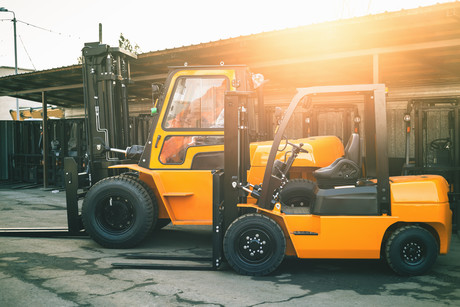Reversing forklift injures worker

A Queensland worker has suffered minor injuries after he was hit by a reversing forklift during an incident in November 2018.
According to a Workplace Health and Safety Queensland incident alert, the worker was struck by a reversing forklift in a factory packing room. He walked up to a forklift to speak with its operator and was struck from behind by another forklift which was reversing, crushing him between the two. Investigations are continuing.
The incident alert said forklifts are one of the most hazardous workplace vehicles and are frequently found in warehouses. Incidents involving forklifts are usually serious and often fatal. Whenever a forklift is used in a workplace, a traffic management plan must be implemented to ensure the safety of drivers and pedestrians.
It said that a traffic management plan is a set of rules for managing the movement of traffic in your workplace. It should be developed by the PCBU in consultation with workers and others in the workplace. Everyone affected by the plan must understand it and follow it.
A traffic management plan should be specific to the current layout of the workplace and be designed around separating pedestrians and mobile plant such as forklifts. According to Workplace Health and Safety Queensland, traffic management plan should consider:
- reorganising the layout of the workplace to minimise areas shared by pedestrians and forklifts;
- using physical barriers such as safety barriers, containment fences, bollards or railed walkways where possible;
- developing ‘no go’ zones for forklifts (pedestrian-only areas including clearly marked pedestrian crossings);
- developing ‘no go’ zones for pedestrians (forklift-only areas);
- the physical environment: lighting, housekeeping and road surfaces;
- movement in the workplace, traffic direction, destination, and volume
- high-visibility or reflective clothing for pedestrians and employees operating forklifts, and high-visibility markings for forklifts (although this is no substitute for physically separating pedestrians and forklifts);
- speed limits, signage and speed-limiting devices;
- proximity devices that trigger signals, boom gates and warning signs and where signs will give advanced warning to pedestrians and operators;
- blind spots caused by stationary equipment and vehicles;
- a combination of audio (eg, reversing alarms and horns) and visual (eg, flashing lights) warning devices (make sure these are working when the forklift is operating);
- signs to indicate who must give way;
- implementing and enforcing procedures that describe how pedestrians and forklifts must interact in different situations.
Amendments to the model WHS Act and Regulations published
Following approval by work health and safety (WHS) ministers, Safe Work Australia has published...
Victoria's new psychological injury obligations now in effect
New obligations have come into effect for workplaces across Victoria to protect employees from...
Survey results show fall in national return to work rate
Safe Work Australia's 2025 National Return to Work (NRTW) Survey results have been released,...








